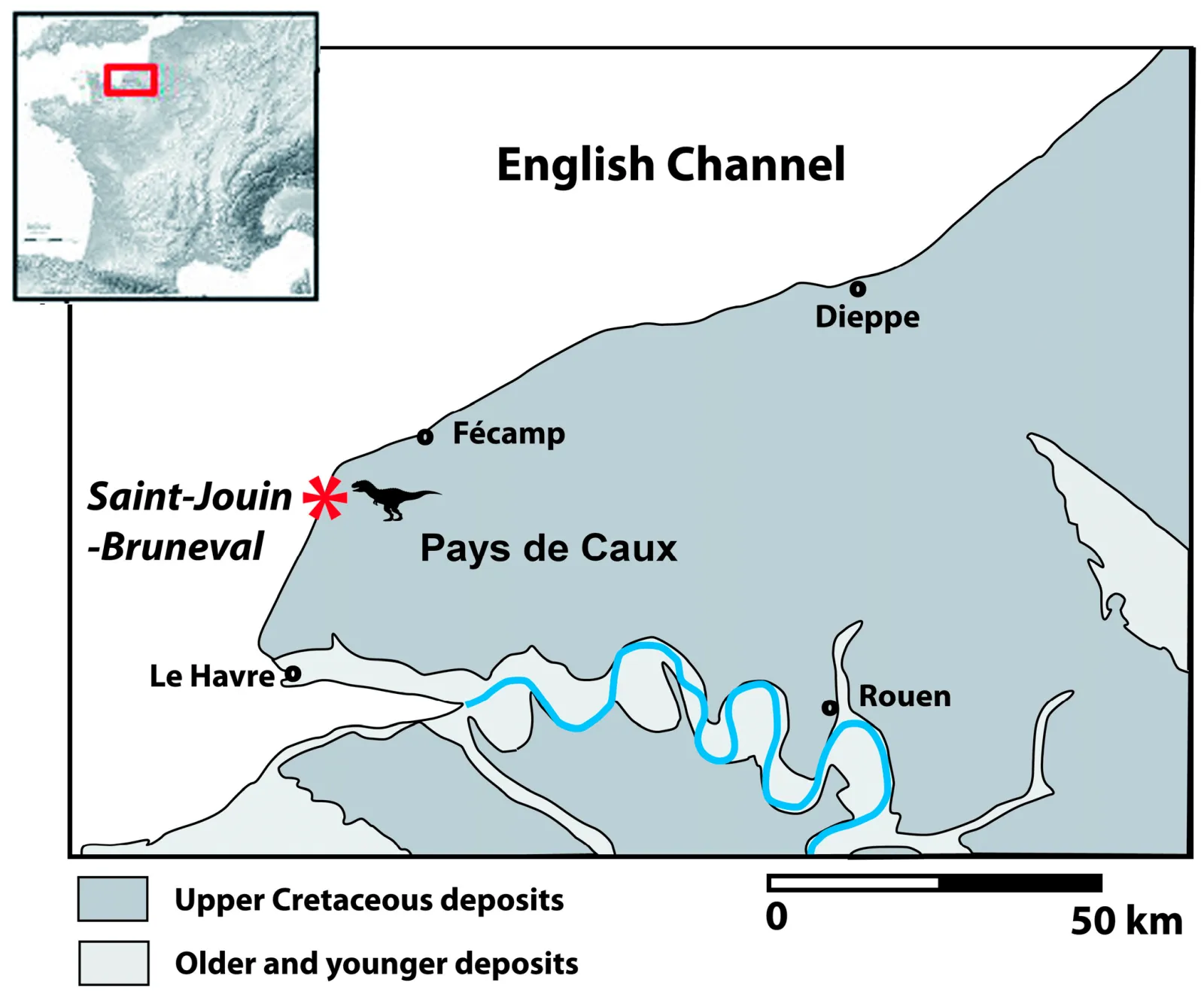Discovery of a new predatory dinosaur species in Normandy, France
Published by Cédric,
Article author: Cédric DEPOND
Source: Fossil Studies
Other Languages: FR, DE, ES, PT
Article author: Cédric DEPOND
Source: Fossil Studies
Other Languages: FR, DE, ES, PT
Follow us on Google News (click on ☆)
Researchers unearthed its bones on a cliff in Saint-Jouin-Bruneval. These valuable clues may help unlock the mysteries of dinosaur evolution.

The chalk cliffs of Saint-Jouin-Bruneval (Seine-Maritime, Normandy, France), where the holotype specimen of Caletodraco cotardi was discovered by Mr. Nicolas Cottard.
Named Caletodraco cotardi, this new species belongs to the Abelisaurid family, previously known only from South America.
This discovery shows that these dinosaurs, far from being confined to Gondwana, also ventured onto the European continent. The fossils, found in glauconitic chalk blocks, are associated with marine remains. This context suggests the animal was transported by water before settling on the ocean floor roughly 100 million years ago.
The Abelisaurids, a family established in 1985 with only one species, have since proven to be a much larger group. Caletodraco cotardi belongs to a subgroup, the Furileusauria, previously identified only in South America. The discovery of this species in Normandy changes our understanding of the geographical distribution of these dinosaurs. Far from being rare in Europe, they appear to have been much more diverse than previously thought.
Dr. Eric Buffetaut and his team believe this find prompts a reassessment of the biogeographic history of Abelisaurids. These predators were not limited to known regions, but spanned seas and continents. In Europe, Abelisaurids may have evolved differently from those on the supercontinent Gondwana. The Majungasaurins might not have been the only subgroup present in this area.

The results of this study, published in Fossil Studies, open up new perspectives on dinosaur diversity and evolution.
What are Abelisaurids and Furileusauria?
The Abelisaurids are a group of theropod dinosaurs that lived during the Cretaceous period, between 100 and 66 million years ago. Carnivorous and bipedal, they were characterized by their extremely short forelimbs and robust skulls, which suited their predatory lifestyle.
The Furileusauria make up a subgroup of Abelisaurids, known for species like Aucasaurus and Ekrixinatosaurus. Discovered mainly in South America, these dinosaurs seemed to have a broader geographical range than initially thought, potentially including Europe with the discovery of Caletodraco cotardi.